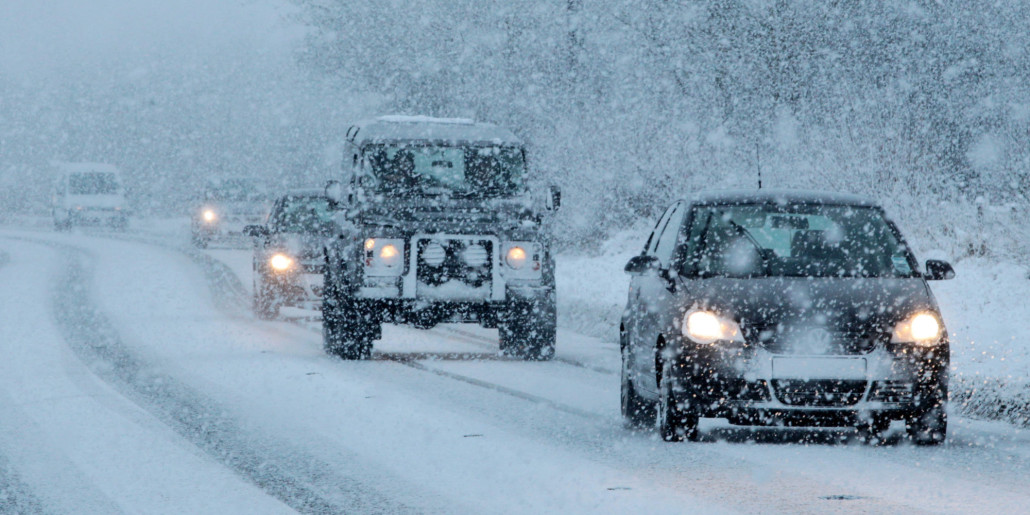How to drive in snow and ice
Get snug. We are now in the winter driving season. Therefore, it’s always a good idea to obtain a brief refresher on how to drive in snow and ice in Colorado, whether you’re new to the state or it’s been a while since you’ve driven in winter conditions.
fus news has put together eight guidelines to abide by when driving in the snow and four items to look out for before leaving.
Prior to driving on ice and snow
Prior to driving on icy and snowy roads, you should always be ready. Here’s a checklist to help you prepare for winter driving conditions, from winterizing your car to packing the necessities.
- Inspect the tires
When driving in the winter, always make sure your tires are properly inflated and have adequate tread. Commercial vehicles should be careful to abide by Colorado’s chain law when traveling in high territory. - Always have an emergency kit in your car
Keeping an emergency kit in your car is usually a smart idea because you never know what will happen. Bring extra blankets and warm clothing during the winter.
In addition, a gallon of water, a first aid kit, necessary medications, a flashlight with extra batteries, a glass scraper/snow brush tool, jumper cables, tire chains, a tow strap, flares or reflectors to signal for help or warn other drivers, and a battery- or crank-powered radio to listen to emergency broadcasts are all advised by the Colorado Department of Transportation.

In addition, CDOT advises carrying hand warmers, non-clumping kittle litter or sand for traction, a deck of cards or a board game for entertainment, and non-perishable snacks.
- Refill your wiper and gas tanks.When traveling throughout the winter, AAA advises keeping at least half of the gas tank in your car at all times. Owners of electric cars should make sure they have enough battery power and a recharge strategy in place. To maintain the clarity of your windshield, it is imperative that you top off your wiper fluid before you drive.
- Make a plan and provide more time for yourself.
It will take longer to drive when there is snow and ice on the roads. To avoid potentially dangerous regions and to give yourself extra time to arrive, plan your route in advance.
Tips for winter driving on ice and snow
If at all feasible, fus news advises remaining indoors during snowy and ice weather. However, there are a few things to consider if you must travel in order to reach your destination securely.
overview
Prepare your car for winter driving conditions by checking that it is ready for the task. This is what you must do:
Installing snow or winter tires, which offer superior traction in slippery and snowy weather, is a good idea.
a. Check Fluid Levels: Make sure the engine oil, windshield washer fluid, and antifreeze levels on your car are adequate.
c. Examine Lights: Make sure that the headlights, taillights, and brake lights on your car are all operating properly.
d. Clear Snow and Ice: Clear your car of all snow and ice, being sure to clear the roof, windows, mirrors, and lights.
e. Bring the necessities: Keep a first aid kit, blankets, a flashlight, non-perishable food, and water in your emergency bag.
Slow Down: In slippery and snowy conditions, it’s important to lower your pace. Better control and reaction time are possible at slower speeds. Remember the following:
a. Extend Following Distance: Give yourself more room to pass the car in front of you.
a. Moderate Braking and Acceleration: To avoid skidding, apply the brakes and gas pedal gently.
Techniques for Steering: It takes skill to steer on snow and ice. The following strategies will assist you in staying in charge:
a. Smooth Motions: To prevent abrupt jerks, steer with soft, fluid motions.
b. Hand-over-Hand: For improved control, employ the hand-over-hand steering method.
c. Correcting Skids: Steer your car in the desired direction if it starts to skid.
Recognizing Traction: In winter driving conditions, traction is critical for safe driving. Keep the following in mind:
Steer clear of abrupt stops: abrupt braking might lock up your wheels and cause you to lose control.
b. Make Use of Low Gears: When driving downhill, use lower gears (such as “L” or “2”) for improved control and traction.
Hills and Inclines: Take additional caution when driving on slippery or snowy hills.
a. Gain Momentum: To lessen the likelihood of becoming stuck, accelerate before climbing a hill.
a. Maintain Speed: When going up and down hills, make an effort to keep your speed constant.
Remain Alert:- Monitor the weather and state of the roads. Before starting your voyage, make sure to check the most recent changes. If the weather is too dangerous, you might want to cancel your trip.
Emergency Situations: Here’s what to do if you run into trouble or come across an emergency:
Remain composed: Anxiety might exacerbate the circumstance. Remain cool.
a. Ask for Help: Make a help request if you are unable to free your car.
c. Stay Warm: While you wait for assistance, keep warm by using your emergency kit.









